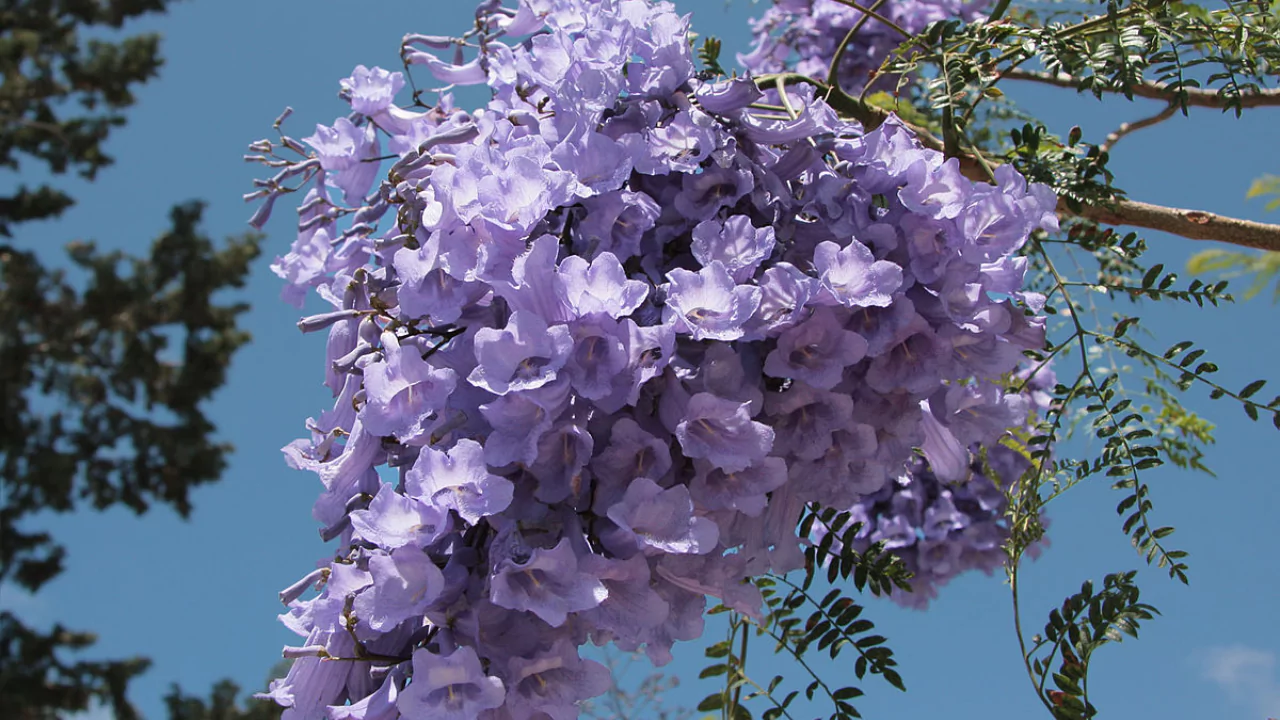
If you travel to some remote tropical area towards the end of spring or during summer, you may encounter a jacaranda tree (Jacaranda mimosifolia). These trees are among the loveliest of tropical trees, with an open, vase-shape and extravagant clusters of fragrant, purple flowers. The flowers are trumpet-shaped and after they bloom, they drop like confetti, forming a delicate, gauzy flower litter across the ground.
In the United States, jacarandas only thrive in U.S. Department of Agriculture plant hardiness zones 10 through 12. Fully grown jacarandas are able to withstand some temperature drops, and may survive down to 20°F and thrive in zone 9, but will not bloom prolifically.
There is a known practice of potting them and keeping them indoors during colder months, but during such hibernation, they rarely flower. The trees themselves are lovely, however the flowers are the main attraction.
Planting a Jacaranda Tree
Jacaranda is native to Argentina and Brazil where it grows as a deciduous tree. Even though it emerges as a deciduous tree in most places, in some locations, it can be semi-evergreen. Along with striking blooms, it features fern-like pinnate leaves which are compounded and resemble the foliage of mimosa trees. If the weather suits, one can plant jacarandas throughout the year.
Select a site that receives full sun or partial shade. Jacaranda trees do well in sandy loam soils but are adaptable to many soil types. They wilt in poorly draining soils.
Dig a hole that is as deep as the rootball but twice as wide. Place the tree in the hole and fill it halfway with soil. Pour 2 gallons of water into the hole and let it drain. Top up the hole with the remaining soil, compacting it with your foot. For the first several weeks, irrigate the tree at least once a week.
Once mature, the jacaranda is moderate in drought resilience. Pruning encourages vertical suckers that can ruin the tree’s beautiful open, upturned umbrella-shaped form. Limit pruning to removing dead or diseased branches.
Jacarandas are pest and disease resistant and rarely need fertilizer. Remove the flower and leaf litter as well as the brown pods that appear in late summer. Do not plant jacarandas over driveways or pools, as the litter can be excessive. Jacarandas can reach heights of 50 feet and spread to 40 feet wide, making them large shade trees.
Growing Jacarandas as Potted Plants
Given their size, they’re not really suitable for small lots. If you wish to grow one in a pot, make sure to select a large one which can hold at least 5 gallons of soil. A potting soil mixture that has sand, perlite, or even vermiculite is recommended.
Frequent watering of potted plants is essential so that the soil remains consistently moist. It shouldn’t dry out, but it should also not reach soggy levels. During the growing season, fertilize potted plants with a diluted 10-10-10 fertilizer every four weeks.
Bring the tree indoors in the fall before the first light frost. During the winter, Jacarandas should be kept in a well-lit, warm, and humid place. For humidity, feel free to mist the tree with water from a spray bottle, or run a humidifier. Indoors, be on the lookout for aphids and whiteflies. Watering should be reduced to a lower level so that soil becomes drier between watering intervals. Skip fertilizer for the winter months.